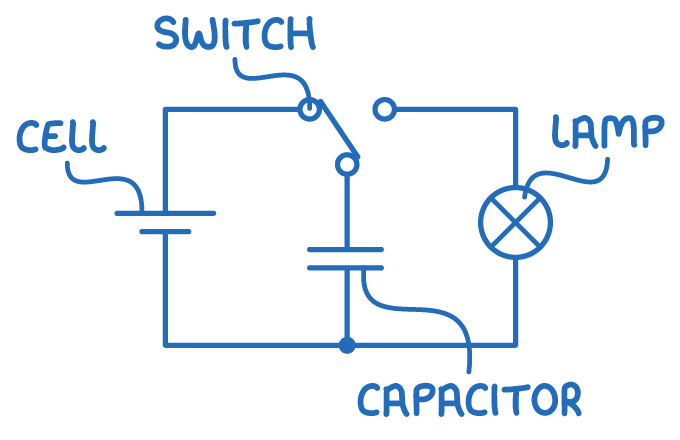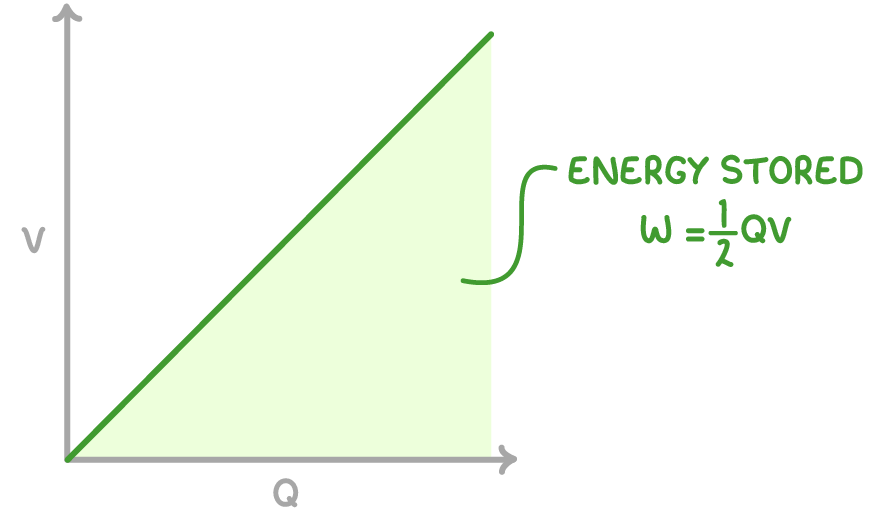Energy Stored In A Capacitor
This lesson covers:
- How capacitors store electrical energy
- Calculating the energy stored in a capacitor
- Equations relating charge, voltage, and capacitance to energy stored
- Practical applications of capacitors
Capacitors store energy
A capacitor consists of two conducting plates separated by an insulating dielectric. When connected to a battery, charge builds up on the plates, storing energy.
Key Points:
- Work is done by the battery to move negative charge from one plate to the other, separating positive and negative charges.
- This work gets stored as potential energy in the electric field between the plates.
- Flicking a switch discharges this stored energy through an external circuit, like a light bulb.

Calculating energy stored in a capacitor
The energy stored by a capacitor equals the work done to charge it up. This can be represented by the area under a potential difference vs charge graph.

The energy stored in a capacitor is given by:
- W=21CV2
- W=21QV
- W=21CQ2
Where:
- W = energy stored (J)
- C = capacitance (F)
- V = voltage across capacitor (V)
- Q = charge stored (C)
Worked example - Calculating the charge stored in a capacitor
Calculate the charge stored by a capacitor with a capacitance of 0.01 Farads and a voltage of 12 Volts.
Step 1: Formula
W=21C V2
Step 2: Substitution and correct evaluation
W=21×0.01×122=0.72 J
What are capacitors used for?
Capacitors have the following key properties:
- Store relatively small amounts of energy
- Can discharge energy very quickly
- Controllable charge storage and release
These make capacitors useful for:
- Camera flashes - releasing energy rapidly
- Backup power supplies - storing charge to release when needed
- Smoothing potential difference fluctuations - charging up then discharging